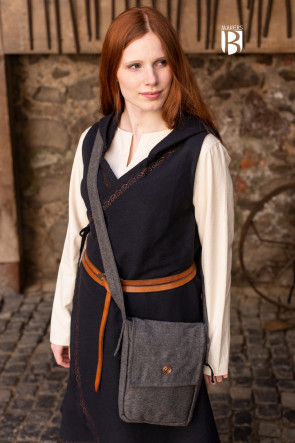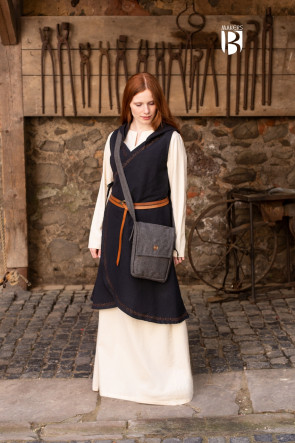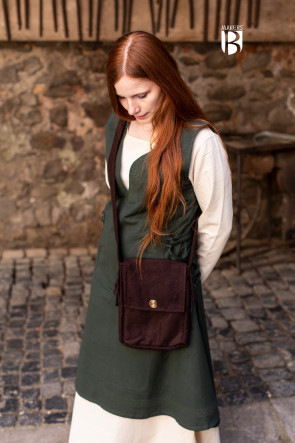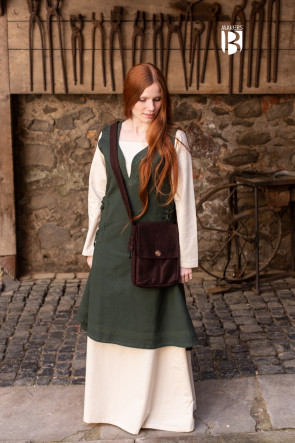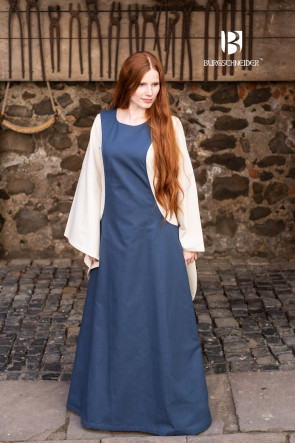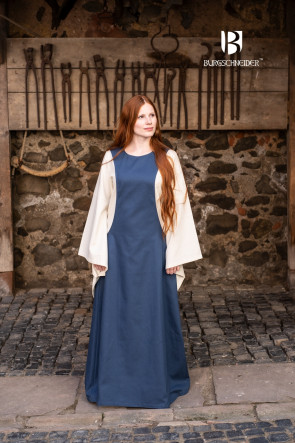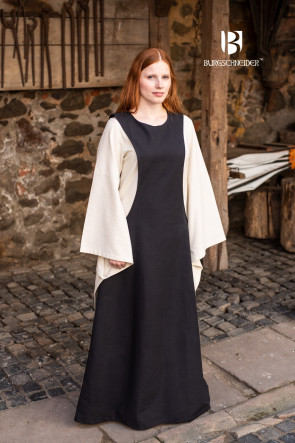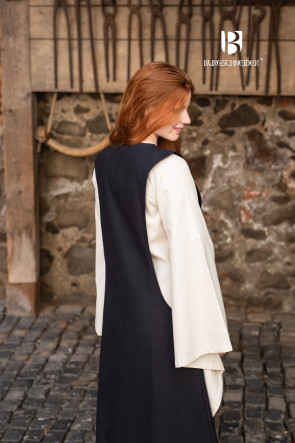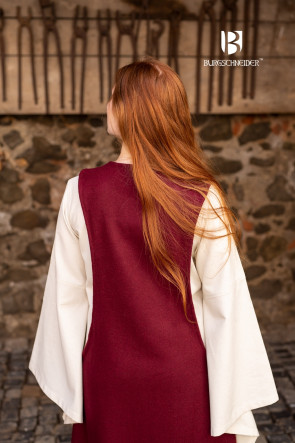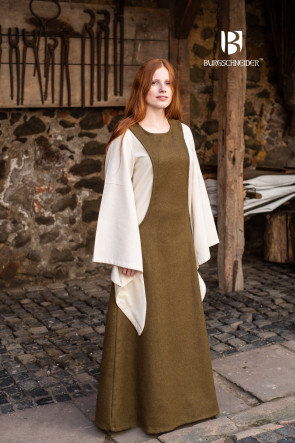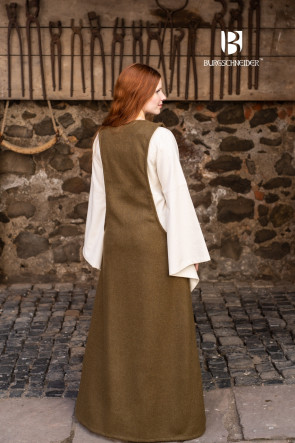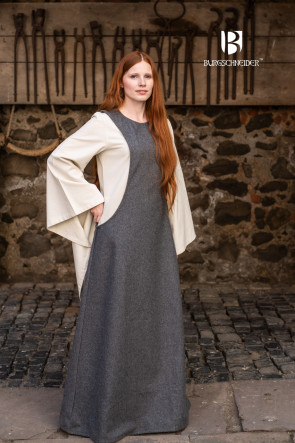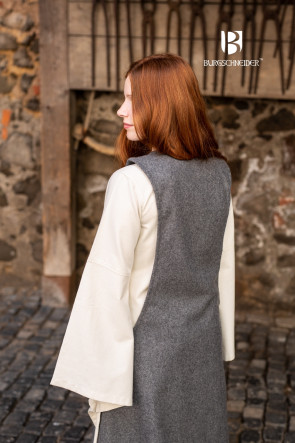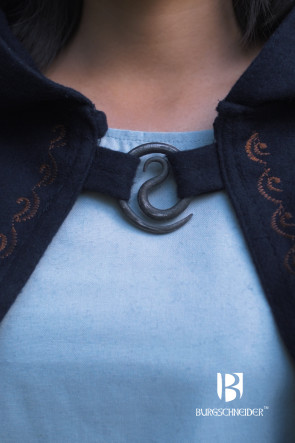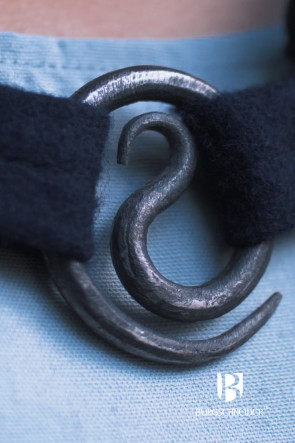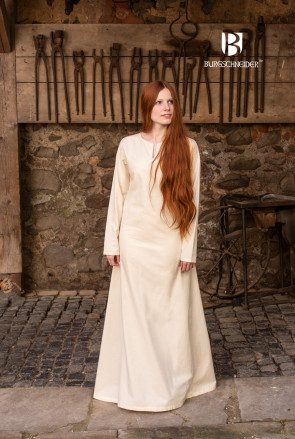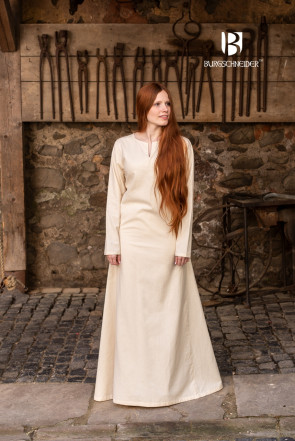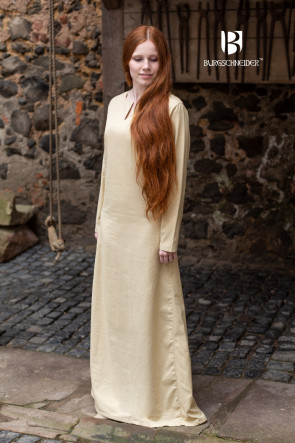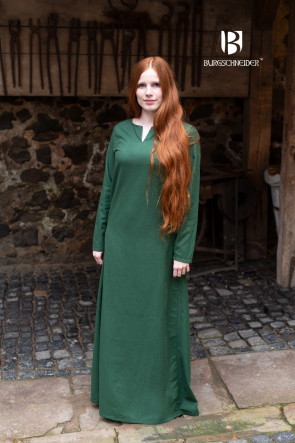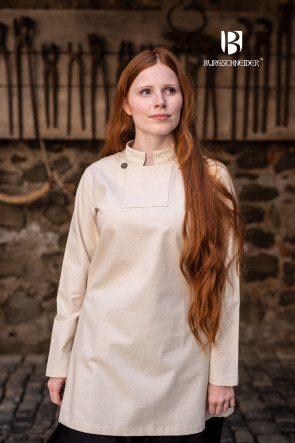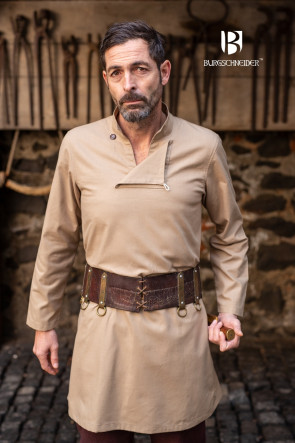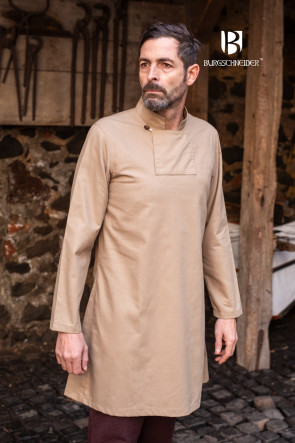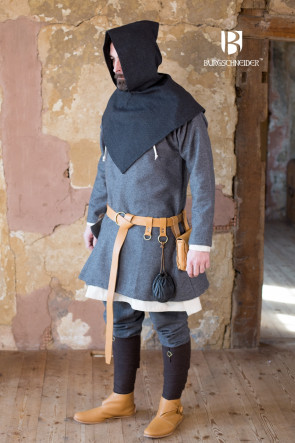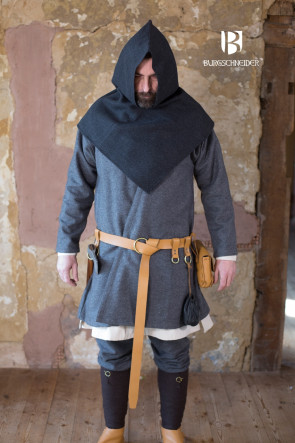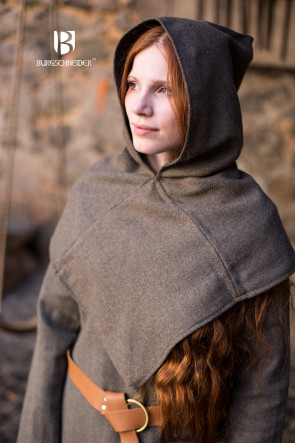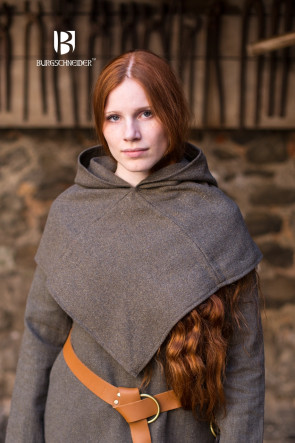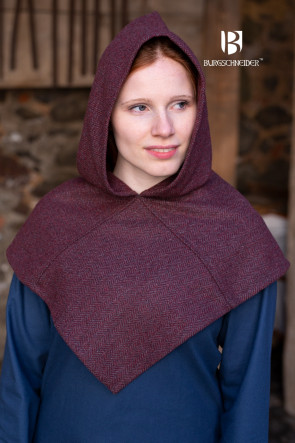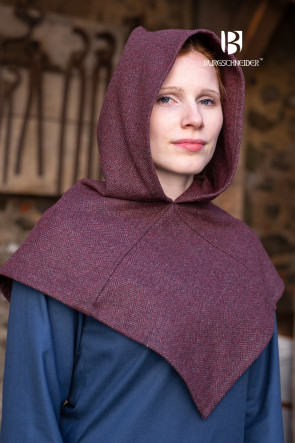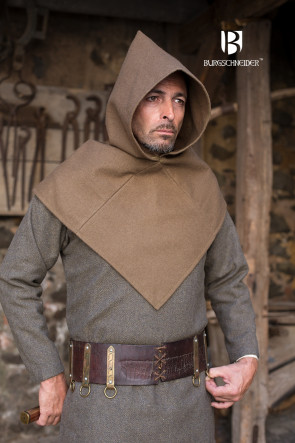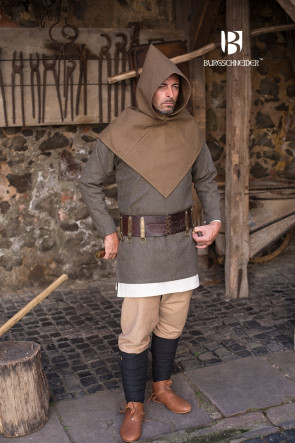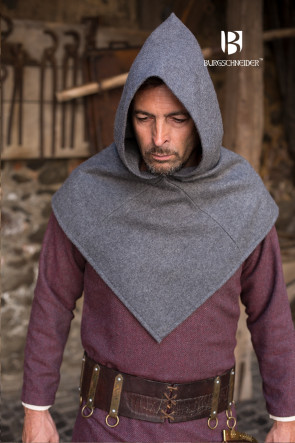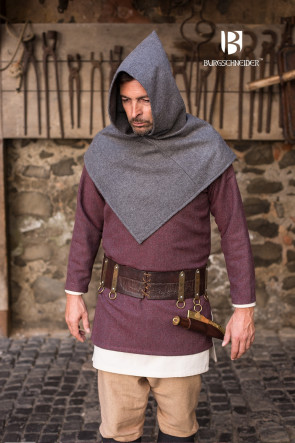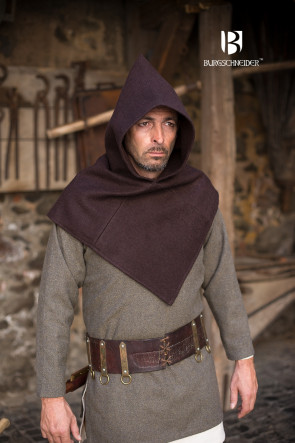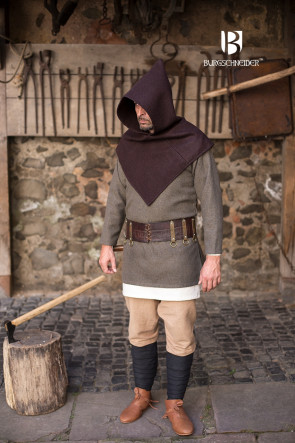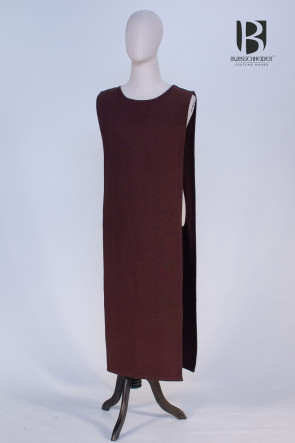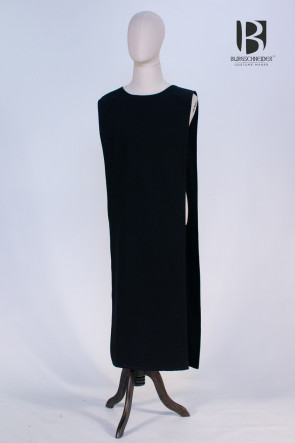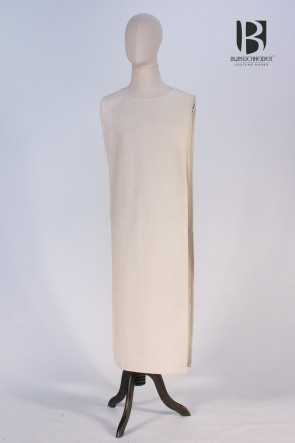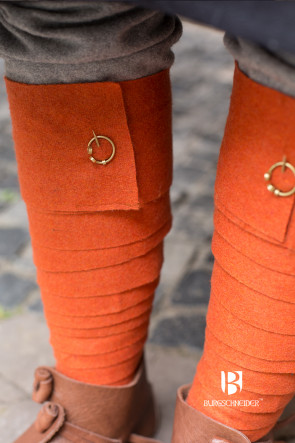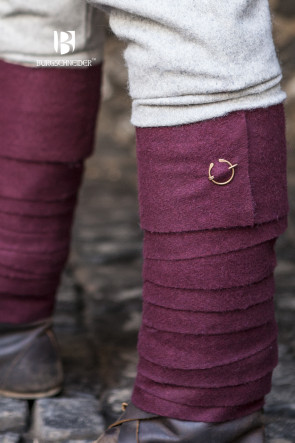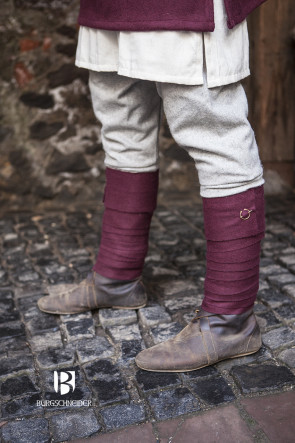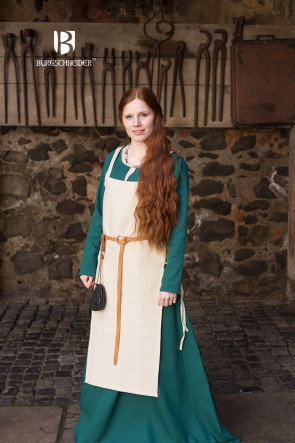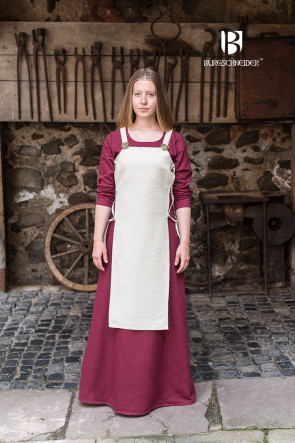Burgschneider
-
Tasche Juna - Wolle Dunkelgrau
- Material: Wool Blend
- Genre: Fictional
- Sizes: Unisize
- Maker: Butterfly Garden
22,90 € -
Tasche Juna - Wolle Braun
- Material: Wool Blend
- Genre: Fictional
- Sizes: Unisize
- Maker: Butterfly Garden
22,90 €Nicht auf Lager
-
Surcot Isabella - Waidblau
- Material: 100% Cotton
- Genre: Fictional
- Sizes: S - XXXL
59,90 € -
Surcot Isabella - Schwarz
- Material: 100% Cotton
- Genre: Fictional
- Sizes: S - XXXL
59,90 € -
79,90 €
-
79,90 €
-
79,90 €
-
Spiral Brooch Lukka - Gun Metal
Our Spiral Brooch Lukka is an elegant garment clasp, which can be used to hold a cloak or cape together.
Every brooch is handmade, which means that there will be slight variations in terms of shape and size. However, the spiral design provides a wonderful finishing touch for many styles.
Mehr erfahren14,90 € -
49,90 €
-
49,90 €
-
49,90 €
-
Skjoldehamn Tunika Lennja - Natur
The Lennja Tunic is ideal for a number of Norse characters as its design harkens back to the Viking age. Perfect for reenactments, medieval fairs or LARP events, the long-sleeved tunic features a buttoned collar. It is made of 100% cotton, and its cut can be easily adjusted for maximum flexibility.
Mehr erfahren33,53 € -
Skjoldehamn Tunika Einarr - Hanf
The Einarr Tunic is ideal for a number of Norse characters as its design harkens back to the Viking age. Perfect for reenactments, medieval fairs or LARP events, the long-sleeved tunic features a buttoned collar. It is made of 100% cotton, and its cut can be easily adjusted for maximum flexibility.
Mehr erfahren44,90 € -
Skjoldehamn Gugel Knud Fischgrät - Schwarz/Grau
The Skjoldehamn Cowl was discovered in a pagan grave from the first half of the 11th century. This is one of the first examples of the headgear "Gugel" itself.
Mehr erfahren
The hood has a basic square shape, characteristically the wide brim ends with a corner on the chest.
The grave find from Skjoldehamn raised many questions since its recovery in 1936 and still occupies today. According to current research, the dating of the pagan grave in the marshland is the first half of the 11th century. The hood of the gugel from Skjoldehamn has a simple square basic shape and a very wide brim which does not fall round but with a corner on the chest. This gugel is also a very early example of the type of headgear that became a ubiquitous garment in Europe during the Middle Ages.
In the course of research, attempts were made to assign the garment to a gender and cultural group. For this purpose, not only the DNA of the buried person was examined more closely but also the additional finds. The enclosed trousers determined the theory of the researchers that the person must have been male. DNA examination in 1999 showed no Y chromosome present in the bones which supported the theory that it had to be a woman instead. However, this methodology is considered outdated.
The question of culture points to Norway. This is assumed by ornamentation and morphological features which suggest that the buried person was a Sami tribal member. Further research is needed, as some key evidence for these hypotheses is still lacking. More modern DNA analysis and research into the history of the fashions of the various Sami groups will shed light on this.34,90 € -
Skjoldehamn Gugel Knud Fischgrät - Oliv/Grau
The Skjoldehamn Cowl was discovered in a pagan grave from the first half of the 11th century. This is one of the first examples of the headgear "Gugel" itself.
Mehr erfahren
The hood has a basic square shape, characteristically the wide brim ends with a corner on the chest.
The grave find from Skjoldehamn raised many questions since its recovery in 1936 and still occupies today. According to current research, the dating of the pagan grave in the marshland is the first half of the 11th century. The hood of the gugel from Skjoldehamn has a simple square basic shape and a very wide brim which does not fall round but with a corner on the chest. This gugel is also a very early example of the type of headgear that became a ubiquitous garment in Europe during the Middle Ages.
In the course of research, attempts were made to assign the garment to a gender and cultural group. For this purpose, not only the DNA of the buried person was examined more closely but also the additional finds. The enclosed trousers determined the theory of the researchers that the person must have been male. DNA examination in 1999 showed no Y chromosome present in the bones which supported the theory that it had to be a woman instead. However, this methodology is considered outdated.
The question of culture points to Norway. This is assumed by ornamentation and morphological features which suggest that the buried person was a Sami tribal member. Further research is needed, as some key evidence for these hypotheses is still lacking. More modern DNA analysis and research into the history of the fashions of the various Sami groups will shed light on this.34,90 € -
Skjoldehamn Gugel Knud Fischgrät - Bordeaux/Grau
The Skjoldehamn Cowl was discovered in a pagan grave from the first half of the 11th century. This is one of the first examples of the headgear "Gugel" itself.
Mehr erfahren
The hood has a basic square shape, characteristically the wide brim ends with a corner on the chest.
The grave find from Skjoldehamn raised many questions since its recovery in 1936 and still occupies today. According to current research, the dating of the pagan grave in the marshland is the first half of the 11th century. The hood of the gugel from Skjoldehamn has a simple square basic shape and a very wide brim which does not fall round but with a corner on the chest. This gugel is also a very early example of the type of headgear that became a ubiquitous garment in Europe during the Middle Ages.
In the course of research, attempts were made to assign the garment to a gender and cultural group. For this purpose, not only the DNA of the buried person was examined more closely but also the additional finds. The enclosed trousers determined the theory of the researchers that the person must have been male. DNA examination in 1999 showed no Y chromosome present in the bones which supported the theory that it had to be a woman instead. However, this methodology is considered outdated.
The question of culture points to Norway. This is assumed by ornamentation and morphological features which suggest that the buried person was a Sami tribal member. Further research is needed, as some key evidence for these hypotheses is still lacking. More modern DNA analysis and research into the history of the fashions of the various Sami groups will shed light on this.34,90 € -
Skjoldehamn Gugel Bjorn Wolle - Herbstgrün
The Skjoldehamn Cowl was discovered in a pagan grave from the first half of the 11th century. This is one of the first examples of the headgear "Gugel" itself.
The hood has a basic square shape, characteristically the wide brim ends with a corner on the chest.
The grave find from Skjoldehamn raised many questions since its recovery in 1936 and still occupies today. According to current research, the dating of the pagan grave in the marshland is the first half of the 11th century. The hood of the gugel from Skjoldehamn has a simple square basic shape and a very wide brim, which does not fall round, but with a corner on the chest. This gugel is also a very early example of the type of headgear that became a ubiquitous garment in Europe during the Middle Ages.
In the course of research, attempts were made to assign the garment to a gender and cultural group. For this purpose, not only the DNA of the buried person was examined more closely, but also the additional finds. The enclosed trousers determined the theory of the researchers that the person must have been male. DNA examination in 1999 showed no Y chromosome present in the bones, which supported the theory that it had to be a woman instead. However, this methodology is considered outdated.
The question of culture points to Norway. This is assumed by ornamentation and morphological features, which suggest that the buried person was a Sami tribal member. Further research is needed, as some key evidence for these hypotheses is still lacking. More modern DNA analysis and research into the history of the fashions of the various Sami groups will shed light on this.
Mehr erfahren25,13 € -
Skjoldehamn Gugel Bjorn Wolle - Grau
The Skjoldehamn Cowl was discovered in a pagan grave from the first half of the 11th century. This is one of the first examples of the headgear "Gugel" itself.
The hood has a basic square shape, characteristically the wide brim ends with a corner on the chest.
The grave find from Skjoldehamn raised many questions since its recovery in 1936 and still occupies today. According to current research, the dating of the pagan grave in the marshland is the first half of the 11th century. The hood of the gugel from Skjoldehamn has a simple square basic shape and a very wide brim, which does not fall round, but with a corner on the chest. This gugel is also a very early example of the type of headgear that became a ubiquitous garment in Europe during the Middle Ages.
In the course of research, attempts were made to assign the garment to a gender and cultural group. For this purpose, not only the DNA of the buried person was examined more closely, but also the additional finds. The enclosed trousers determined the theory of the researchers that the person must have been male. DNA examination in 1999 showed no Y chromosome present in the bones, which supported the theory that it had to be a woman instead. However, this methodology is considered outdated.
The question of culture points to Norway. This is assumed by ornamentation and morphological features, which suggest that the buried person was a Sami tribal member. Further research is needed, as some key evidence for these hypotheses is still lacking. More modern DNA analysis and research into the history of the fashions of the various Sami groups will shed light on this.
Mehr erfahren25,13 € -
Skjoldehamn Gugel Bjorn Wolle - Braun
The Skjoldehamn Cowl was discovered in a pagan grave from the first half of the 11th century. This is one of the first examples of the headgear "Gugel" itself.
The hood has a basic square shape, characteristically the wide brim ends with a corner on the chest.
The grave find from Skjoldehamn raised many questions since its recovery in 1936 and still occupies today. According to current research, the dating of the pagan grave in the marshland is the first half of the 11th century. The hood of the gugel from Skjoldehamn has a simple square basic shape and a very wide brim, which does not fall round, but with a corner on the chest. This gugel is also a very early example of the type of headgear that became a ubiquitous garment in Europe during the Middle Ages.
In the course of research, attempts were made to assign the garment to a gender and cultural group. For this purpose, not only the DNA of the buried person was examined more closely, but also the additional finds. The enclosed trousers determined the theory of the researchers that the person must have been male. DNA examination in 1999 showed no Y chromosome present in the bones, which supported the theory that it had to be a woman instead. However, this methodology is considered outdated.
The question of culture points to Norway. This is assumed by ornamentation and morphological features, which suggest that the buried person was a Sami tribal member. Further research is needed, as some key evidence for these hypotheses is still lacking. More modern DNA analysis and research into the history of the fashions of the various Sami groups will shed light on this.
Mehr erfahren25,13 € -
Skapulier Franz - Braun
- Genre: Historic
- Sizes:S/M, L/XL, XXL/XXXL
- Product Details:
- Traditional tabard for monk’s robes. Designed to complete the Burgschneider Monk’s Robe Franziskus but versatilely combinable.
- Material:Chester Plain 100% Cotton
- The colours shown may differ from the actual colours depending on the monitor and resolution of your computer.
- Please note that cotton fabrics may shrink when washed!
39,90 € -
Skapulier Benedikt - Schwarz
- Genre: Historic
- Sizes:S/M, L/XL, XXL/XXXL
- Product Details:
- Traditional tabard for monk’s robes. Designed to complete the Burgschneider Monk’s Robe Benediktus but versatilely combinable.
- Material:Devon Rough 100% Cotton
- The colours shown may differ from the actual colours depending on the monitor and resolution of your computer.
- Please note that cotton fabrics may shrink when washed!
39,90 € -
Skapulier Benedikt - Natur
- Genre: Historic
- Sizes:S/M, L/XL, XXL/XXXL
- Product Details:
- Traditional tabard for monk’s robes. Designed to complete the Burgschneider Monk’s Robe Benediktus but versatilely combinable.
- Material:Devon Rough 100% Cotton
- The colours shown may differ from the actual colours depending on the monitor and resolution of your computer.
- Please note that cotton fabrics may shrink when washed!
39,90 € -
Set mit 2 kleinen Fibeln Vafi
The brooch set Vafi consists of two handmade brass ring fibulas with a diameter of about 2.5 cm, designed specifically for our winingas but can be used everywhere else. The present omega brooch is a type of brooch in use since Roman antiquity, especially the offered variant with the balls as endings, and corresponds to the Ibero-Roman type, which was used from the Roman imperial period to the Middle Ages.
Mehr erfahren
Each brooch is unique, so small variations in shape and size are possible. Their simple elegance makes them suitable for any style.11,90 € -
Set mit 2 kleinen Fibeln Uri
The brooch set Uri includes two handmade brass ring brooches with a diameter of about 2.4 cm, designed specifically for our winingas but can be used with any other clothing.
Mehr erfahren
Each brooch is unique, so small variations in shape and size are possible. Their simple elegance makes them suitable for any style.11,90 € -
Schürzenkleid Gyda - Hanf
- Material: 100% Cotton
- Genre: Historic
- Sizes: S - XXL
- Reference: Hedeby Dress
29,33 €








